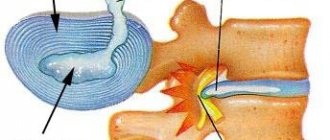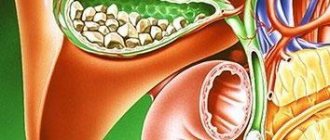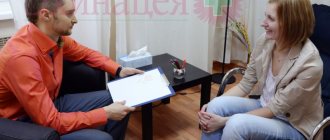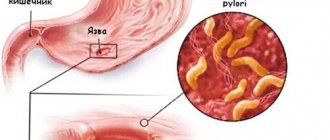Do you feel tingling and spasms in the solar plexus area? Consult a doctor quickly to avoid possible consequences. The celiac plexus is located above the diaphragm and is a node of nerve endings. Many people have pain in the solar plexus area, the reasons are different for everyone, because you need to figure them out based on the symptoms, the nature of the pain, because they can talk about different things, since there are many nerve endings there. The pain may not necessarily come from the solar plexus area, but it will be quite possible to feel it in this area.
Naturally, the best decision would be to go to a doctor or call him at home in case of severe pain. But in any case, you need to know what to do in order to more accurately determine the pain problem itself, what measures should be taken and what should not be done. It is worth understanding that in addition to a bunch of nerve endings, important organs are located in this place, such as the kidneys, aorta, esophagus, ureter and others. If any of the organs does not function properly, then pain symptoms can be felt in the solar plexus.
What is the solar plexus
Chest pain
The triangle itself under the ribs, where the rays of nerve endings converge, cannot hurt. This is the articulation of the mesenteric nerve ganglion, as well as the right and left celiac. This arrangement resembles the divergence of rays, which is why the place is called the solar plexus. It provides communication with the human central nervous system, so pain is reflected.
A burning sensation in the solar plexus is a symptom of diseases of the internal organs, about which signals are sent to the “main remote control” of our body. Most often, these are inflammatory processes, but pain and burning may indicate injury or damage to one of the nerve areas of the sternum.
Prevention and treatment of such symptoms
Often pain in the solar plexus occurs as a result of an injury.
Pain in the solar plexus can be felt in connection with diseases of other organs. Some of these diseases may not pose any threat, but others can lead to severe consequences and poor overall health. For diagnosis, the following methods are used:
- Ultrasound therapy of the abdominal cavity
- CT scan
- Taking an x-ray using a contrast agent (allows you to ultimately identify the cause of the disease on an x-ray)
- Laparoscopy (for this purpose, a miniature video camera is introduced into the abdominal cavity; it is done if other methods do not give an effective result)
- Tests (feces, urine)
- Bacteriological studies
- Endoscopic examination of the duodenum and esophagus
Despite a fairly wide range of methods for identifying the cause of the disease, none of them may reveal the underlying cause. Therefore, it is necessary to resort to treatment of the underlying disease. Treatment is prescribed by a doctor.
So now you know the consequences of minor pain in the solar plexus. If you experience any of the above symptoms, you need to see a professional as soon as possible. Neglecting and delaying treatment can result in real suffering and serious health problems. The sooner you contact the clinic, the sooner it will be clear how to prevent the problem.
Digestive diseases
Stomach pain
The most common cause of pain and burning in the solar plexus are negative processes occurring in the abdominal cavity. There are many of them, but they are all interconnected, since the human digestive system is a single mechanism.
It is not difficult to distinguish their ailments from everything else:
- Nausea appears before or after eating. Burning and pain are directly related to food intake. There may be loss of appetite.
- Belching appears, especially after eating. The burps may be sour or simply contain leftover food - reflux.
- Unpleasant phenomena accompany the feeling of hunger.
- In addition to burning, pressing pain is felt below the solar plexus on the right or left.
These are symptoms of diseases of the stomach, pancreas, liver or gall bladder. It is impossible to say which organ gives particularly strong unpleasant symptoms; as a rule, the processes occur in a complex.
During pregnancy, a burning sensation in the pit of the stomach, belching and pain in this area are especially frequent. During this period, a woman’s body works “for two,” so digestive problems are more likely the norm than a pathology.
Of course, it’s worth checking the functioning of the abdominal organs, but, most often, you just need to follow the diet.
What diseases can be suspected if you find all these symptoms:
- Gastritis, duodenitis and other stomach diseases.
- Pancreatitis in acute or chronic form.
- Cholecystitis.
- Hepatitis, hepatosis, cirrhosis.
- Stomach ulcer, duodenal problems.
- Polyps, intestinal obstruction, dysbacteriosis.
This is an incomplete list of serious pathologies that can be identified with a burning sensation in the solar plexus area.
What can you do on your own for chest pain?
Solar plexus pain can be severe
If the pain can be called tolerable, then it is enough to take painkillers and antispasmodics, after which you should still seek help from a general practitioner. But there is a certain disadvantage here, since drugs can reduce symptoms and it will be much more difficult for the doctor to understand the cause of the pain.
If the pain is very strong, then it is better not to take any painkillers, but to call an ambulance, they will be able to adjust your further actions more accurately. The following factors to consider will help determine the cause:
- Time of day at which the pain worsens
- Actions that cause pain
- The nature of the sensations (cuts, stabs, aches, etc.)
- Were there any injuries the day before that could have caused pain?
If you do not know what to do correctly, do not take risks, so as not to aggravate the problem, contact a professional.
Neuralgia and neuritis
Another diagnosis that most people do not pay attention to is intercostal neuralgia or neuritis. Neuralgia occurs from compression of the nerves or their irritation. But the reasons are not as simple as they seem.
Burning sensation in the chest area
In addition to injuries, these may be invasive parasitic infections or infectious processes. In this case, it is necessary to treat the cause of the pain. With conventional painkillers you only suppress the symptoms, but do not treat the source of their occurrence.
Neuritis, in terms of the nature of the pain, resembles neuralgia, but its causes lie in inflammation of the nerve endings that are located in the solar plexus area and their traumatic damage. The burning and pain are so severe that they require immediate relief. Neuritis is a consequence of untreated neuralgia, among other things.
Warning signs
Severe pain in the upper abdomen, usually in the middle or left, sometimes radiating to the back can be a sign of acute pancreatitis.
Sometimes painful attacks are tolerable and pass quickly. However, there is a list of signs that require urgent consultation with a doctor:
- burning pain, visible swelling;
- disturbances in the respiratory system (difficulty taking a deep breath);
- feeling of constriction and tightness in the chest;
- heat inside.
All these signs indicate the development of a serious pathology that should be diagnosed.
Vomiting can occur as a concomitant symptom not only of diseases of the digestive system, but also of cardiac pathologies.
Solarite
This ailment is a consequence of neuritis. The pain becomes chronic, sometimes not going away with severe attacks. They do not allow me to lead a normal life. Unpleasant sensations occur at any time of the day in any position of the body. Solaritis is an advanced stage of inflammation and damage to nerve endings.
Expanded symptoms of the disease:
Solarite
- The pain radiates to the back and sides.
- There is a constant feeling of heat in the solar plexus area and a feeling of high body temperature, in its absence.
- There is a feeling of squeezing in the sternum, it resembles heart pain.
- Since the processes develop near the stomach, it becomes toned. As a result - nausea, belching, vomiting.
Symptoms and location of pain
Esophagitis provokes pain above the solar plexus. Inflammation of the stomach wall always occurs with painful manifestations in the left hypochondrium or directly near the edge of the costal arch.
Digestive problems are often indicated by a metallic taste or bitterness in the mouth.
With angina, unpleasant sensations periodically appear in the area where the ribs join and last for 15–20 minutes. They are accompanied by acute pain on the right side, which radiates under the shoulder blade, shortness of breath, dizziness, and pain under the ribs.
Neuralgia causes sharp pain. There is a feeling that this area is being squeezed in a vice. Breathing or movement is often difficult.
For neuritis and solaritis:
- The pain radiates to the back and sides.
- I constantly feel heat in the solar plexus area, it seems that the temperature has risen, but the thermometer shows normal.
- A pressing sensation appears in the sternum and persists for a long time.
- Since the processes develop in close proximity to the stomach, it becomes toned. The person feels sick and has heartburn.
Pancreatitis is characterized by sharp, severe, point pain. They are accompanied by frequent vomiting along with bile, diarrhea with the remains of undigested food, and fever.
The injury is usually characterized by the urge to defecate and vomiting. Lung disease is always accompanied by a cough and lack of air.
Injuries
Traumatic lesions must be treated immediately so that the process does not develop into solarium. Most often, these are blows to the sternum, for example, a ball in sports games, falls, car accidents, and household injuries. The blow provokes severe pain, the urge to defecate, and vomiting. The patient bends over and may begin to choke.
In this case, they help him straighten up, allow him to catch his breath, and then send him to the hospital for examination. The causes of burning in the solar plexus area may be surgical intervention. Here, symptomatic treatment or examination is necessary for persistent pain.
You should not self-diagnose the causes of discomfort in the solar plexus area. The symptoms of many diseases are similar, but the treatment is different. It is better to go to the hospital, get examined and get the right therapeutic help.
Causes of pain
There are 2 main causes of pain in the solar plexus area:
- Disturbances in the functioning of the celiac plexus itself (trauma, neurological diseases, etc.).
- Pathologies of various internal organs.
The nature of pain in the solar plexus varies. So, it can be sharp, sharp, dull, pulling, aching, stabbing. Pain syndrome can be expressed in the form of attacks, or it can be present constantly over a long period of time. This directly depends on the reasons that caused the development of the pain syndrome.
Physical overexertion
One of the most common, and at the same time safe, causes of pain in this area of the human body is physical overexertion. It occurs when a person involved in sports distributes the load incorrectly, for example:
- when he runs for a very long time at a fast pace;
- lifts weights that are too heavy for him in the gym, etc.
In this case, when the body realizes that the limit of its capabilities has been reached, you begin to feel a tingling sensation in the solar plexus. If the overload of the body is unacceptably severe, the tingling turns into quite noticeable injections, the pain from which radiates to the back. Of course, in this state a person is no longer able to continue sports activities and stops.
Despite the fact that nothing will happen to you from one overload, you should not force the solar plexus to experience such sensations again and again, as sooner or later this can develop into a violation.
To prevent anything like this from happening, take the following precautions:
- learn the correct technique for performing the exercises that make up your complex of classes, and follow it;
- give up movements that cause you pain if you cannot perform them without causing the desired sensations.
Pain due to injury
A fairly common cause of such symptoms as pain in the solar plexus is injury or damage. For example, when struck in the sternum or when a ball hits the abdominal area, the nerves of the solar node will certainly be affected. This will instantly cause severe pain, which in case of serious damage is accompanied by disturbances in the rhythm of breathing, nausea or vomiting, burning in the abdomen, the urge to defecate, and aching and dull sensations in almost the entire abdominal cavity. To alleviate the condition of the victim, he needs to be helped to straighten up (most likely, he will bend at the time of injury or after it) and lay him on a flat surface. After some time, everything will return to normal.
Neuritis – damage to the solar plexus
It often occurs against the background of the patient already having osteochondrosis, radiculitis, herpes zoster or vertebral hernia. A characteristic feature of neuritis is pain localized in the midline drawn from the sternum to the navel. It can radiate to the right or left leg. Involuntary short-term breath holdings are possible. The pain is dulled when the legs are bent towards the stomach. Unpleasant sensations occur in paroxysms with a strong stabbing character.
It is worth noting that solar plexus neuritis can cause disruption of a number of secretory functions of the body. For example, a change in the process of secretion of bile or gastric juice, the occurrence of stagnation of food in the stomach, an increase in the acidity of gastric juice, etc., which also has an extremely negative effect on the general condition of the patient.
Neuralgia
Neuralgia occurs when, under the influence of any external factors, the nerve nodes and tissues located in the area we call the solar plexus are irritated. However, this painful condition is characteristic not only of these nerve tissues, but also of any others located inside our body.
Neuralgia pain is paroxysmal in nature. If you press lightly on the upper part of the peritoneum, you will most likely immediately feel a strong painful response in the back area. Patients whose solar plexus is affected by a neuralgic process try to carefully:
- move;
- go to bed;
- sit down, etc.
Solarite is a common cause of pain
Solaritis is a disease in which an acute inflammatory process develops in the solar plexus. Pain radiating to the lower back, lower abdomen and back is a characteristic symptom of solaritis. The nature of the unpleasant sensations is always painful. The pain is sharp, boring, burning. Most patients are forced to resort to strong anesthetic drugs - but this approach to therapy does not affect the cause of the disease, and the pain returns. Solarite can provoke the following conditions:
- hypothermia;
- low immunity (including human immunodeficiency syndrome);
- chronic stress;
- excessive physical activity;
- recent severe infectious disease;
- surgery, general anesthesia, implantation.
If solaritis is not treated, the pain will intensify and eventually severe pathologies of the nervous system may develop. Treatment requires a course of physiotherapy, nootropics, exercise therapy, giving up bad habits and changing lifestyle. Pain in the stomach and solar plexus area is often caused by the following problems with the gastrointestinal tract:
- From the stomach - gastritis, erosion, peptic ulcer, tumors. The nature of the pain varies greatly depending on the disease that provoked it. If there are problems with the mucous membrane of the fundus of the stomach, pain appears after eating. If the problem is located closer to the duodenal sphincter, it occurs on an empty stomach. With gastritis of various etiologies, the pain, as a rule, has a nagging, subtle nature.
- Chronic duodenitis (inflammation of the duodenum) is also characterized by pain in the solar plexus. What kind of disease is this - duodenitis? This is a pathology of the upper intestine, most often provoked by poor nutrition and low tone of the immune system. With duodenitis, nagging, excruciating pain occurs in the solar plexus on an empty stomach. There may be an increase in temperature to 37–38 degrees, weakness, chills, dizziness, and decreased performance.
On the part of the small intestine, the cause of pain in the epigastric region is most often intestinal infections, adhesions in the abdominal region, neoplasms of various types, massive helminthic and other parasitic infestations. An accurate diagnosis can be made by a gastroenterologist after endoscopy, ultrasound and biochemical blood tests. In some cases, it is necessary to resort to magnetic resonance therapy to clarify the diagnosis.
Disorders of the gastrointestinal tract
Painful sensations in the solar plexus area, which, to top it all, radiate to the back, can be provoked not only by various diseases of the nerve tissue, but also by disturbances in the functioning of any elements of the digestive system of the body.
1. Thus, pain can be transmitted to the area of interest to us not by problems directly with the solar plexus, but by diseases of the stomach, for example, such as:
- peptic ulcer;
- malignant neoplasms;
- gastritis and the like.
In this case, the pain that bothers the patient will appear in the patient after a meal. At the same time, the patient’s comfort and accompanying symptoms of diseases, such as:
- long lasting heaviness in the abdomen;
- bloating and flatulence are so strong that it is sometimes embarrassing to go outside;
- dyspeptic disorders in the form of diarrhea, constipation or vomiting.
In addition, to top off the symptoms listed above, difficulty sleeping, lethargy, fatigue and a feeling of loss of control over the body are also added. In fact, this is the case, therefore, you should consult a doctor as soon as possible to prevent the spread of the disease.
2. Pathological processes occurring inside the duodenum. These could be:
- infectious diseases of various etiologies;
- cancer processes;
- polyposis;
- peptic ulcer and the like.
In this situation, the patient will no longer suffer from pain after eating, but, on the contrary, in the intervals between meals.
The hungrier a person is, the stronger the pain syndrome will manifest itself, simultaneously spreading to the chest with the peritoneum, and to the back area. In addition, disturbances in the functioning of the intestines are accompanied by:
- nausea;
- vomiting;
- other dyspeptic disorders associated with stool.
3. Impaired functioning of the pancreas, which is responsible for the production and delivery of digestive enzymes to the gastrointestinal tract, which help process the food you absorb. Inflammation of the gland (pancreatitis) can occur in the following stages:
- acute;
- chronic.
In each case, the manifestation of the disease will vary. So, in acute pancreatitis, the iron digests itself, as it produces an excess amount of enzymes. In the chronic form of the disease, on the contrary, digestive juices are produced in insufficient quantities.
In addition, in addition to inflammation, oncology, various infections and diseases of other etiologies can develop in the pancreas. Additional symptoms associated with pancreatic diseases and pain in the solar plexus area will be as follows:
- nausea;
- vomit;
- breathing problems;
- increased body temperature;
- fever.
4. Worm infestation is another reason for pain in the solar plexus area. As you know, when worms settle inside our organs, they begin to multiply and carry out vital activity, leaving the products of its flow in our body. As a result, painful sensations may occur inside the solar plexus, also spreading to the back. The insidiousness of this pathology lies in the fact that people are not inclined to take it seriously and consult a doctor.
In fact, as practice shows, it is very difficult to cure yourself from an invasion without knowing the regimens for using medications that have a real effect. As a result, the growth of worms only progresses, and along with it, the corresponding consequences, including pain in the plexus, become more noticeable.
Diseases of the lungs and respiratory tract
Painful sensations in the area of interest to us can also manifest themselves during various pathogenic processes inside the lungs, bronchi, trachea, etc. Usually an unpleasant feeling occurs when a person:
- coughs;
- sneezes;
- takes a breath, etc.
Along with pain radiating from the sternum to the back, a person may experience the following unpleasant symptoms accompanying respiratory disease:
- persistent cough;
- shortness of breath;
- temperature and the like.
Cardiac diseases
The development of cardiac pathologies is indicated by pain that occurs in the solar plexus even after minor physical exertion. In this case, the heart rhythm may be disturbed and interruptions in the functioning of the heart muscle may occur. Weakness, a feeling of lack of air, pain in the chest, which subsides after the person rests - all these symptoms may indicate the presence of coronary heart disease. Such manifestations cannot be ignored, since untimely treatment of coronary artery disease is fraught with the development of myocardial infarction.
To make a diagnosis, the cardiologist will refer the patient to:
- electrocardiogram;
- Ultrasound of the heart;
- clinical blood test.
IHD is treated with medication. For this purpose, statins, β-blockers, and nitrates are taken. If there is no effect from conservative treatment, surgical intervention is performed. After completing the therapeutic course, the patient is prescribed a diet, exercise therapy, and sanatorium treatment. In order not to provoke a relapse of the pathology, the patient must completely quit smoking.
Mild heart failure can also be treated with medications. The patient should reduce the intensity of physical activity, instead of which a course of exercise therapy is carried out. In this case, the patient is prescribed a strict diet that completely excludes salt, as well as vitamin therapy.
If myocardial infarction occurs, causing pain in the solar plexus, the patient is urgently taken to intensive care. He is prescribed painkillers and antihypertensive medications. After completion of treatment, the patient will undergo a six-month rehabilitation course. At the same time, he must follow a salt-free diet and completely give up smoking. Some medications are prescribed to the patient for life to maintain normal functioning of the heart muscle.
Diagnostics
Since pain in the chest area combined with belching is a manifestation of many diseases, a hardware examination is prescribed after a preliminary thorough analysis of the existing symptoms:
- First you need to analyze the pain. At the same time, they take into account such characteristics as: type (dull, sharp), in which place it gives (shoulder blades, arm, finger, etc.), character (presses, stabs, burns), on which side it most often occurs, and other important points.
- They also pay attention to what time of day the pain syndrome occurs and how it is related to food or physical activity.
- Of great importance is the identification of conditions that contribute to the intensification or, conversely, elimination of pain. For example, it may worsen with movement or normal breathing, and it may be alleviated by medication or by adopting a certain body position.
- Sometimes information about the illnesses of relatives, the patient’s age parameters, and the characteristics of his lifestyle help to make a correct preliminary diagnosis.
- It is imperative to study the moments that preceded the appearance of pain and belching. You may have previously suffered an injury (even a minor one) or a serious illness.
Such a detailed analysis makes it possible in most cases to establish a preliminary diagnosis and conduct a correct diagnostic examination.
Pain in the solar plexus: causes and types
The processes connecting human organs with the nervous system are difficult to count. For these properties, scientists call the solar plexus the abdominal brain. And depending on the location of the pain symptoms, it is worth talking about the probable cause of their occurrence.
Depending on the different locations of pain, types of pain are distributed:
Pain under the solar plexus
The causes of pain are usually:
- internal genital organs (problems with the ovaries and uterine tubes)
- urinary system (ureter and bladder)
- acute inflammation of appendicitis
- problems with the intestines (colon or rectum)
Pain above the solar plexus
These types of pain are caused by problems with:
- digestive system (esophagus)
- pleura
- with my heart
- lungs (pneumonia)
- diaphragm
- neuralgia (intercostal)
Therapy methods
Methods for treating pathology associated with pain in the solar plexus can be conservative, surgical and folk. It all depends on how complex the problem turns out to be.
Drug treatment
Painkiller
In case of diseases of the internal organs, it is necessary to prescribe drugs that relieve an attack of pain: antispasmodics and analgesics.
- Spasmalgon - 1 tablet 3-4 times a day, depending on the intensity of the manifestation.
- Drotaverine (No-shpa) - prescribed when a severe spasm occurs, but not less than 2 tablets/day.
- Analgin - 1 tablet 4 times a day.
Antibiotic
Antibacterial agents are also prescribed in case of severe inflammation and pain in the plexus:
- Vibramycin, Doxal - 2-3 times a day, the dosage of the drug is prescribed by the attending physician.
- Zinacef in powder form for injection. To prepare one injection, you will need an ampoule of the drug, diluted in a 1:1 ratio with water for injection or saline. Prescribed up to three times a day.
- Cefotaxime is administered 2 times a day every 12 hours. The dosage is determined by the attending physician.
Sedative
When a pathology of a psychological nature is identified, a number of sedatives and sedatives are prescribed:
- Magne B6 - 2 tablets 3 times a day;
- Calm down - 1 tablet 3 times a day;
- Afabazole - 1 tablet three times a day after meals.
Traditional therapy
Herbs for the treatment of the gastrointestinal tract
Medicines based on decoctions of medicinal herbs should be chosen with caution, as they can cause allergic reactions. Therefore, the doctor must independently prescribe the composition for complex treatment. Gastric and thoracic infusions can be prescribed: chamomile, celandine, St. John's wort, etc. They are excellent in helping with the formation of gases in the intestines and loose stools.
Steaming chamomile, thyme, nettle or lavender is prescribed as soothing herbs. You need 1 tbsp. Pour 1 liter of boiling water over the dried herb and let the product cool until it cools completely. Should be taken after meals three times a day, 2 tbsp.
Do not store herbal infusions in the refrigerator. They lose their properties. It is necessary to make a fresh product at least once every three days.
Whatever the causes of pressing pain in the solar plexus area after eating, they must be quickly relieved and appropriate treatment begun. In case of protracted pathology and the presence of complications, surgical intervention is indicated. Failure to go to the clinic in a timely manner entails a serious danger to life.
Treatment
The therapeutic strategy is built depending on the examination results. And it differs radically in organic diseases of the abdominal organs and in neurological diseases. In case of strangulation of a hernia of any location, tissue necrosis, operable tumors, accumulation of blood and fluid, surgical intervention is performed.
Drug treatment
For severe pain, it is common to prescribe antispasmodics and painkillers. In the absence of organic causes of pain, treatment is carried out by a psychoneurologist. In this case, the therapeutic regimen may include antiepileptic and sedatives that relieve anxiety, depression, possible phobias and neurotic manifestations.
Note! The fear of sharp, severe pain is not always justified: sometimes it is caused by banal flatulence. But the danger of prolonged dull pain, which many people prefer to endure or drown out with painkillers, is underestimated. Meanwhile, they are often a symptom of serious diseases, especially in combination with a sharp drop in immunity and weight loss.
Diet
A gentle diet, the requirements of which depend on the condition of the mucous membranes, the nature of the stool, the presence of ulcers, the level of acidity and glucose in the blood, the presence of stones, the condition of the biliary tract (the gallbladder has been removed or not), is usually indicated for inflammatory or infectious diseases of the gastrointestinal tract.
Folk remedies
The choice of traditional medicine, like diet, is specific. It depends on the diagnosis, the stage of the disease, previous (for example, hepatitis) and concomitant diseases and operations, blood pressure indicators. The likelihood of allergic reactions, which is especially high when using plant materials, should also be taken into account.








